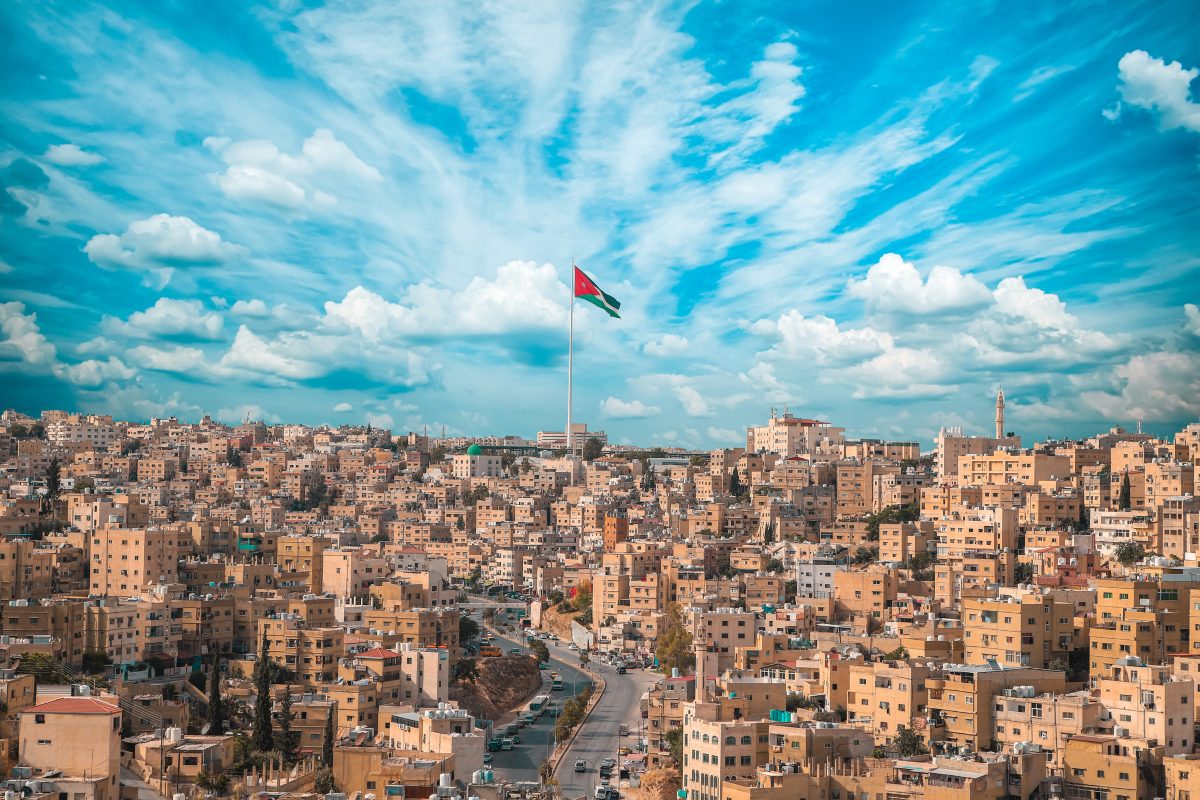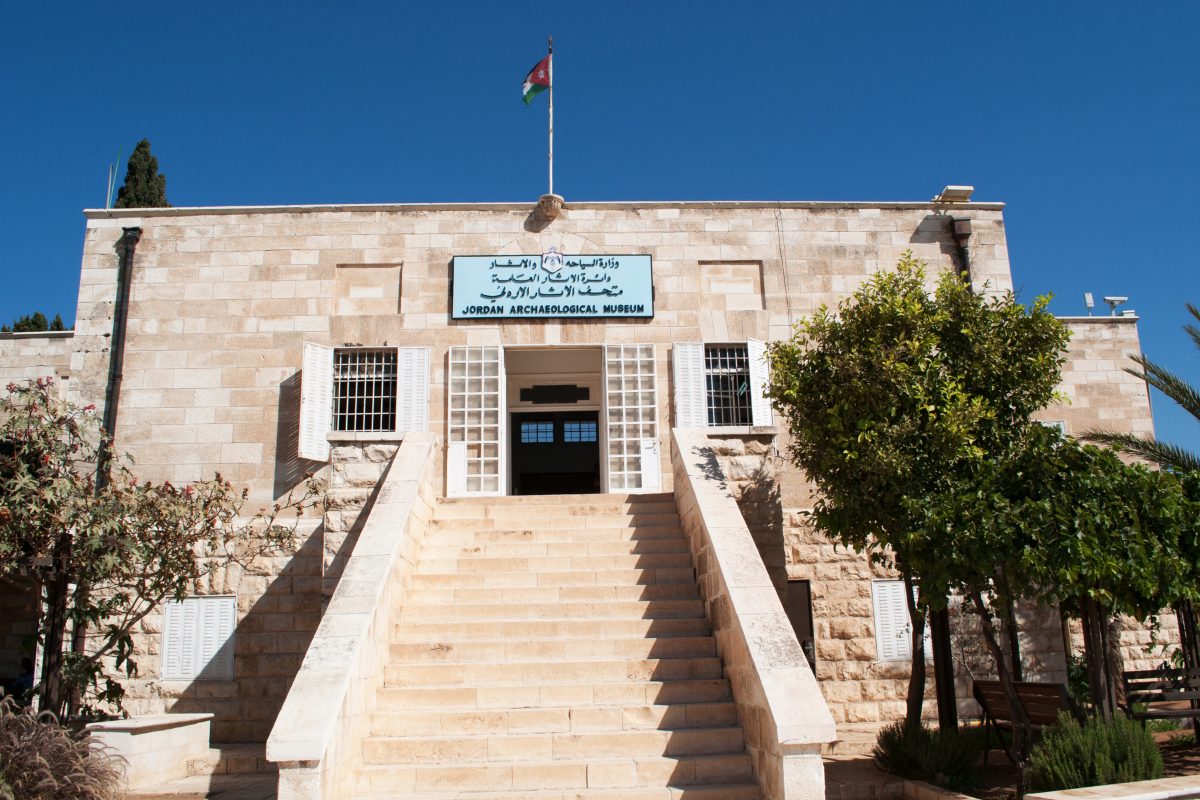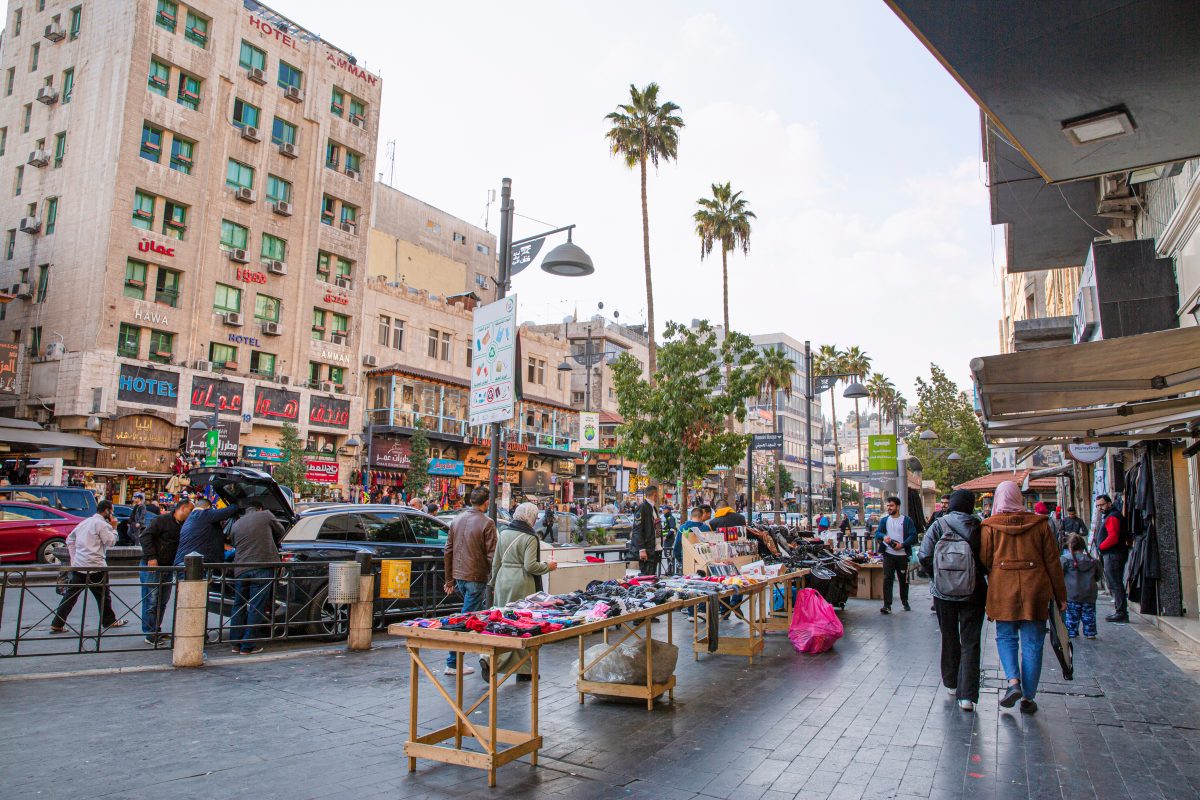Amman is the capital and largest city of Jordan: its population exceeds 4 million. It is also the city with the most pulsating heartbeat, both socially and culturally. Therefore, in
our circuits
we usually reserve a part of the time to get to know it. On this page we tell you what to see in Amman, what to do and other information that will be of interest to you when you visit this city.
Amman is located in the north-western sector of Jordan, in an area of irregular and mountainous relief, about 50 km from the border with Israel (to the west) and about 120 km from the border with Syria (to the north).
Its climate, as in many other places in Jordan, is characterized by the great thermal oscillation between winter and summer. In winter, the days can become very cold, with the possibility of some snowfall even. In summer, there can be sweltering heat, with thermometers well above 30ºC most days.
This has to do, in Amman and in other cities of the country, with its geographical location: it is located on a plateau and the altitude in many points exceeds 800 meters above sea level, approximately. Undoubtedly, the spring months (April, May) and autumn months (October, November) are the most suitable for visiting the city from a climatic point of view, although the city welcomes visitors throughout the year and only reduces its daily rhythm during the month of Ramadan.

Walking through the streets of Amman, where the buildings of the twentieth century of cream and gray colors predominate (the latter due to the lack of maintenance), the traveler might think that we are facing a city of recent creation, without historical monuments. But nothing could be further from the truth: there is a lot what to see in Amman, and very old.
It is known that this territory was already populated in Neolithic times, as evidenced by the site of Ain Ghazal, located on the outskirts of the city: a settlement that has brought us spectacular sculptures in stone and plaster in the form of statuettes, datable around 8,500 BC 4,000 years before the pyramids of Egypt!
In later millennia, this territory was part of what was known as Canaan and the Ammonite kingdom. He experienced commercial contacts with the main civilizations of the time, such as the Egyptian and the Mycenaean.
The area of the current Citadel, on the Jebel al-Qala’a hill, is the part of the city that has been permanently inhabited since ancient times: since about 1800 BC, under the name of Rabat or Rabat Ammon. In fact, it is mentioned in the Old Testament and was besieged by King David.
Subsequently, it was conquered by successive invading empires, such as the Assyrians and Persians. Egypt, during the Ptolemaic dynasty, also extended its tentacles to present-day Amman. In fact, Pharaoh Ptolemy Philadelphus rebuilt it and renamed it Philadelphia, in the third century BC.
The Romans also submitted it to their rule, becoming part of the Decapolis (network of 10 Roman cities on the eastern border of the empire, among which was also
Gerasa, modern Jerash
). He lived a period of splendor, and to understand it there is no more what to see in Amman the spectacular remains of the Roman Theatre and other great buildings. But with the fall of the Western Roman Empire, its importance also decreased, being somewhat relegated in Byzantine times.
Since the middle of the seventh century, after the Muslim conquest, Amman experienced a certain resurgence for several centuries, both with Umayyads and Abbasids, largely due to its position on one of the caravan routes of the region, which connected Damascus with Mecca. However, this slows down significantly in times of the Crusades, when the central role of the territory is assumed by Karak, from the tenth century, and when different natural disasters occur.
It will not be until the early twentieth century when Amman regains a preponderant role in the geopolitics of the area: the construction by the Ottoman Empire of the Hejaz railway, which connected Damascus and Medina, put this city back on the map, although the project declined due to the Arab revolt in 1916.
However, the twentieth century definitively gave Amman its role as capital: either under the English protectorate or as an independent kingdom since 1946, the monarchs of the Hashemite dynasty elected it to establish their court and government, until today.

The most interesting places to see in Amman are spread over its different hills, known as
jebel
. In ancient times, the city stretched for seven, but today encompasses more than a dozen. Each of them constitutes, to a large extent, a neighborhood with its own personality. Jebel Amman and Jebel al-Qala’a, the oldest nucleus of Amman, stand out for their historical and monumental importance.
This is a list of places to see in Amman, located not only in Jebel Amman but also in other neighborhoods of the city. To see them all, you will need more than one day of visit, especially if you want to enter one of its museums.

Amman is undoubtedly the most interesting city in Jordan from a museum and artistic point of view. It has interesting exhibition centers, both modern creators and the past, as well as several archaeological museums with pieces of enormous value. This is a list of museums What to see in Amman if you have time:
If you have enough time on your trip and can spend more than one day in this city, you will also find interesting places to see in Amman peripheral. Here is a short list of proposals:

Amman is one of the liveliest cities in Jordan and here the leisure plans are more varied than in other parts of the country. In recent times parties and cultural events are organized in privileged places, such as the Roman Theater or the Odeon, so we recommend you consult the tourist office (see below). The most important music festival is probably the Amman Jazz Festival, with local and international groups and artists.
For shopping, Amman is also a good destination. It has the main souks or markets in the country, among which you can mention the souk of the hardware store (metal objects), the Jara souk or the gold souk (or El-Sagha). In addition, it concentrates numerous antique shops and handicrafts, some of them from local cooperatives. And for more modern and international shopping, the great shopping center of Amman is the City Mall.
Finally, gastronomy is another attraction of Amman. Not only because of the enormous variety of restaurants, for all tastes and budgets, but also because cooking courses are organized for travelers, which introduce them to Jordanian flavors and culinary techniques. Our staff will know where to eat in Amman, what to see and where to do any of these activities.
Amman is the great gateway to the country. It has Jordan’s main international airport, Queen Alia International Airport. On our page on
How to get to Jordan
you can consult the complete list of destinations directly connected to it. To this must be added the direct flight that arrives to Amman from Aqaba, the other operational airport in Jordan.
To reach Amman by land, you will have no choice but to use the road, either by car or bus, since the railway service is very limited in the country: it only has one line from Damascus, which currently cannot be considered as a viable option.
Amman, on the other hand, is well connected by road to the rest of the country. The main bus company, JETT, has in the capital the epicenter of its network, as it could not be otherwise, and connects the city with some of the main tourist destinations, such as Aqaba, Petra, the Dead Sea or Wadi Rum, are scheduled departures almost daily. The two main stations of its network are Abdali and 7th circle. This company also has long-distance lines to/from Cairo and to the Saudi cities of Jeddah, Riyadh and Dammam.
In any case, the private vehicle is presented as the most comfortable and independent option. Whether you opt for a chauffeured car or a rental car to drive on your own, these are some distances and indicative times:

Another important issue for every traveler is how to get from the airport to the center. Again, the most comfortable is to hire a private transfer with driver, which will wait for you at the exit of the airport and will take approximately 30 minutes to reach the center, if there is no traffic jam.
If you prefer to make this journey on your own, these are the options you have:
In Amman you will find the main administrative institutions of the country, some of which offer services to the citizen and the traveler. In particular, you can write down the following services:






Fill out the form below to receive a free non-binding quote tailor-made by a specialized agency in Jordan.
DMC travel agency specializing in tailor-made trips to Jordan
Mandala Tours, S.L, NIF: B51037471
License: C.I.AN-187782-3